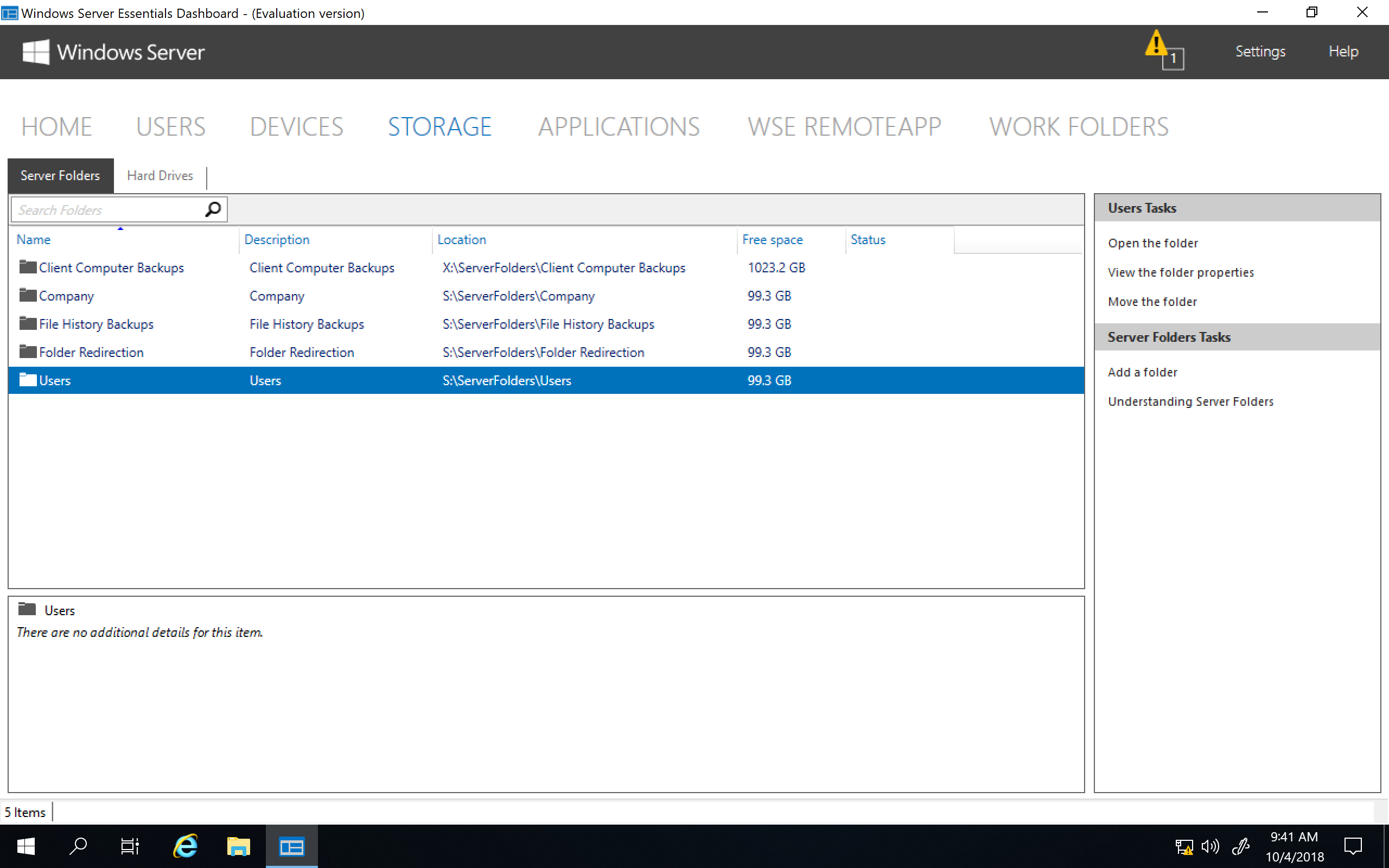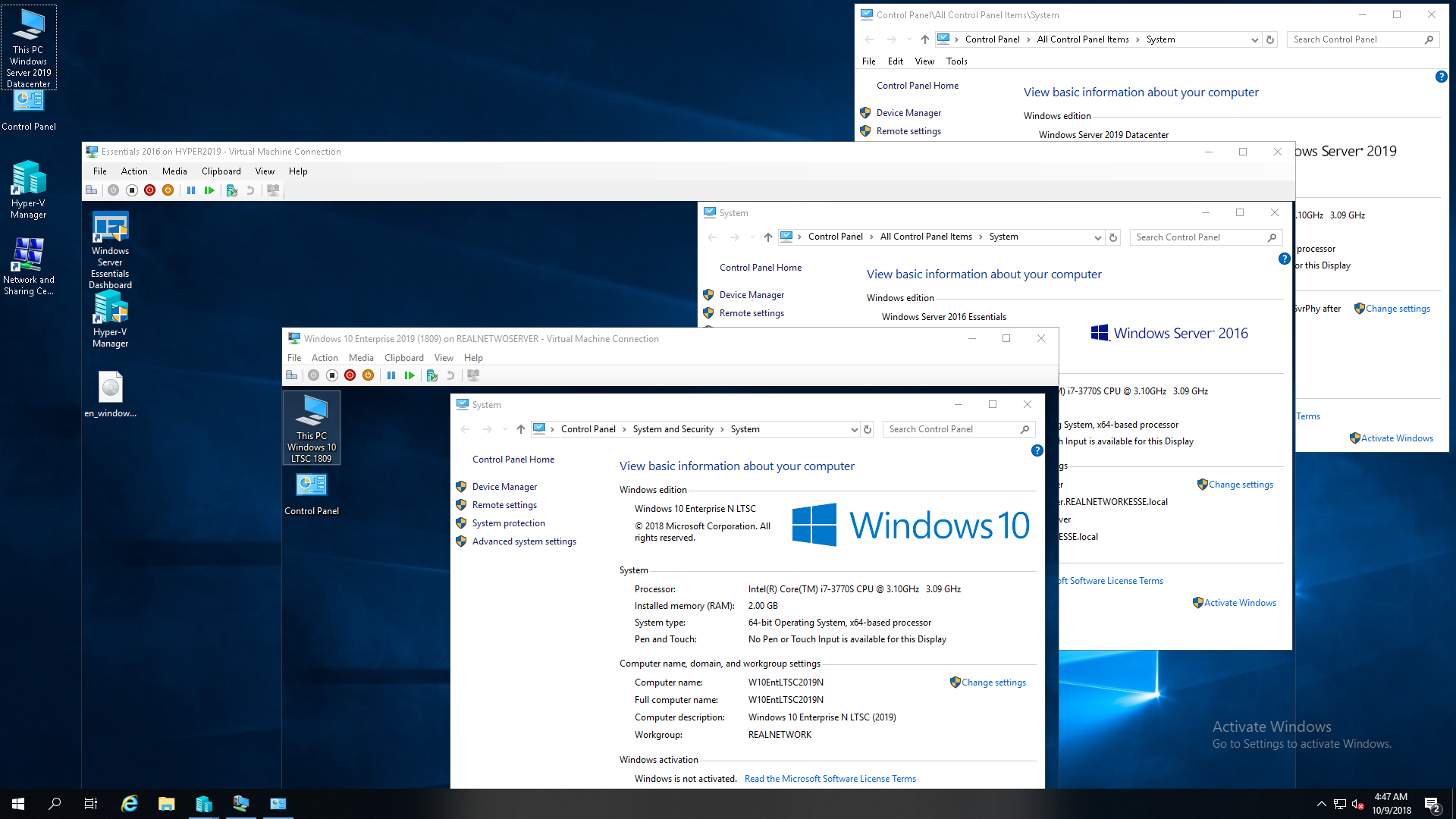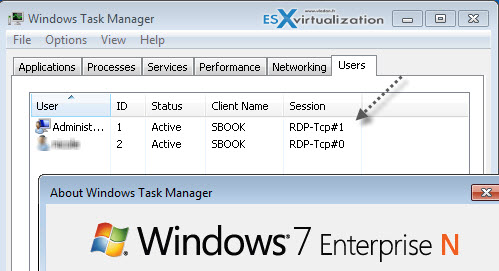Comments Off on Enable Multiple Remote Desktop Connections in Windows Server 2019 / 2016 / 2012 » Posted in Others, Tips & Tricks. Tags: allow more than 2 rdp sessions allow multiple remote desktop connections server 2019 increase remote desktop connections server 2012 multiple remote desktop connections. 3.3.2 Using the Server Software. A User Account is a unique user name with its associated password created through the Windows Server 2019 Essentials Console. Customer may use up to 25 user accounts. Each user account permits a named user to access and use the server software on that server. Installing Remote Desktop Services (RDS) on Windows Server 2019 appears to take many steps, but in reality is quite easy. In this article, we dive into how to install these services in a domain environment that requires two servers.
- Windows Server 2019 Essentials Multiple Rdp Sessions
- Windows Server 2019 Essentials Multiple Rdp Software
- How To Allow Multiple Rdp Sessions Server 2016
- Enable Rdp Windows Server 2012
| Developer(s) | Microsoft |
|---|---|
| Stable release | |
| Type | Operating system |
| License | |
| Website | www.microsoft.com/windows/multipoint |
Windows MultiPoint Server is an operating system based on MicrosoftWindows Server using Remote Desktop Services technology to host multiple simultaneous independent computing stations or terminals connected to a single computer. Windows MultiPoint Server 2012 was the final release as an independent SKU and has been superseded by the MultiPoint Services role in Windows Server 2016.
Enable Multiple RDP Sessions Log into the server using Remote Desktop. Open the start screen (press the Windows key) and type gpedit.msc and open it Go to Computer Configuration Administrative Templates Windows Components Remote Desktop Services Remote Desktop Session Host Connections.
Versions[edit]
Windows MultiPoint Server 2010[edit]
This version was planned in January 2010 but was released in February 2010 and is based on Windows Server 2008 R2.[1] Multiple stations can be added to a WMS 2010 host computer by connecting a single monitor, USB 2.0 hub, keyboard and mouse for each station. Hardware requirements for MultiPoint stations are non-proprietary, and virtually any multi-monitor video card, mouse, keyboard and monitor that is supported on Windows Server 2008 R2 can be used to build a station.[2]
Windows MultiPoint Server 2010 is available for purchase via either OEMs or Academic Volume Licensing. The Academic version, acquired via Academic Volume Licensing, supports domain join and no licensing restrictions on station count (however, hardware limits still apply), but requires a Windows Server 2008 R2 CALand a Windows MultiPoint Server 2010 CAL per station, while the non-Academic version that is acquired via OEMs is limited to 10 stations maximum and does not support domain join, but only requires a Windows MultiPoint Server 2010 CAL per station and no Windows Server 2008 R2 CALs.[3]
Windows Server 2019 Essentials Multiple Rdp Sessions
Windows MultiPoint Server 2011[edit]

Windows MultiPoint Server 2011, based on Windows Server 2008 R2 SP1, was released to manufacturing on 10 March 2011.[4] New features in Windows MultiPoint Server 2011 include:
- The ability to add connect stations and thin clients over the LAN via traditional RDP clients
- Support for RemoteFX capable thin clients
- A shared management console extensibility with Windows Small Business Server 2011 and Windows Home Server 2011
- The ability to be backed up by Windows Small Business Server Essentials 2011 (the only server SKU that allows and supports this)[5]
- Features that allow administrators to view and interact with thumbnails of station desktops, including
- Projecting a single station's desktop to one or all stations[6]
- Locking the keyboard and mouse of station and displaying a message
- Remotely opening and/or closing applications
- Restricting internet browsing to a specific list of sites or blocking browsing to a specific list of sites
- Management of multiple WMS servers and stations from within a single administration console
- Support for running within a virtual machine
- Distribution through a wider variety of distribution channels for both editions
In addition, unlike Windows MultiPoint Server 2010, Windows MultiPoint Server 2011 has Standard and Premium editions. The following table compares the two editions' differences; they share all other features equally.[3][7][8]
| Standard | Premium | Notes | |
|---|---|---|---|
| Maximum simultaneous stations (licensing limit) | 10 | 20 | Hardware limits still apply and Client Access Licenses are required (see below) |
| Maximum random-access memory (RAM) | 8 GB | 32 GB | Motherboard limitations still apply |
| Supported processor sockets | 1 | 2 | Only x86-64 sockets are supported. |
| Domain join | No | Yes | See also:Active Directory |
| Hyper-V support | No | Yes | '1 on 1' licensing model for the Premium edition. |
| Licensing | 1 OS license per WMS instance, 1 WMS 2011 CAL per station, and for copies purchased through Volume Licensing, 1 Windows Server 2008 CAL per station as well. | All licenses are sold either via OEMs or Volume Licensing. | |
Windows MultiPoint Server 2012[edit]

On 27 November 2012, Microsoft released Windows MultiPoint Server 2012 to manufacturing.[9] This is the first version of MultiPoint to be based on Windows Server 2012, and contains several new features and upgrades from previous versions:
- The addition of the MultiPoint Dashboard, an application that allows specific non-administrator users to monitor and interact with user desktops
- The ability to create stations from virtual machines running on the WMS server Premium - Not available on the Standard version.
- Disk protection, a server feature that discards changes made to the server during user sessions similar to Windows SteadyState
- Windows 8 desktop experience for users, including access to the Windows Store
- Monitoring client computers running Windows 7 or 8 with the MultiPoint Server Connector
Windows Server 2016[edit]
Windows Server 2016 now includes MultiPoint Services as a role.Includes the ability to deploy a server in a multipoint role.

Windows Server, version 1803[edit]
In Windows Server, version 1803, Microsoft is no longer developing the MultiPoint Services role as part of Windows Server. Only the MultiPoint Connector services are available through Feature on Demand for both Windows Server and Windows 10.[10]
See also[edit]
References[edit]
Windows Server 2019 Essentials Multiple Rdp Software
- ^'Windows MultiPoint Server 2010 Brings More Affordable Computing for Education'. Windowsteamblog.com. 24 February 2010. Archived from the original on 21 September 2010. Retrieved 10 March 2011.
- ^'Windows MultiPoint: Learn More'. Microsoft. Retrieved 10 March 2011.
- ^ ab'How to Buy | Windows MultiPoint Server 2011'. Microsoft. 1 February 2008. Retrieved 10 March 2011.
- ^'Windows MultiPoint Server 2011 has RTM'd!!!'. Windows Multipoint Server Team Blog. Retrieved 10 March 2011.
- ^'Windows MultiPoint Server 2011 and Interaction with Small Business Server 2011 Essentials'. The Official SBS Blog. 23 February 2011. Retrieved 10 March 2011.
- ^'2011 | Windows MultiPoint Server 2011'. Microsoft. Retrieved 10 March 2011.
- ^'Windows Multi Point 2011 and How it Fits into Your Small Business'. SeanDaniel. 6 January 2011. Retrieved 10 March 2011.
- ^'Did you know this about multipoint server?'. Msmvps.com. 6 March 2011. Retrieved 10 March 2011.
- ^Goddard, Steven (27 November 2012). 'Windows MultiPoint Server 2012 released to manufacturing, available for evaluation today!'. Technet. Retrieved 20 January 2013.
- ^'Features removed or planned for replacement starting with Windows Server, version 1803'. microsoft.com. 10 May 2018. Retrieved 27 December 2018.
External links[edit]

If you use a headset for VoIP calls through your PC, you want the headset speaker to be active for VoIP applications and your normal speakers to work for other applications.
After updating Windows 10 Pro from 1709 to 1803, on the first VoIP call, I had the other’s person speaking through the desktop speakers. How to fix that?
If you right-click on the speaker icon in the system tray (near the clock), as of 1803, Recording devices is gone. If you select Open Sound settings, you’ll be directed to a new Sound pane in Windows 10 Settings:
This giant, dumbed-down control panel basically lets you set your input and output device and volume. Period. There is no way to set the Default Communications Device.
How To Allow Multiple Rdp Sessions Server 2016
If you click App volume and device preferences, another giant dialog lets you set custom output volume for a few apps.
You need to scroll all the way down to the bottom and click on Sound control panel. This will finally bring up the usable Windows 7 sound control panel. Right-click on your headset and choose Set as Default Communications Device:
Enable Rdp Windows Server 2012
Once you apply that setting, the green phone handset icon tells you that your headset will once again be used by communication applications:
